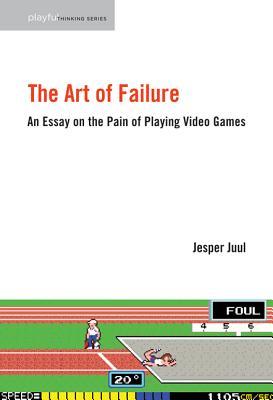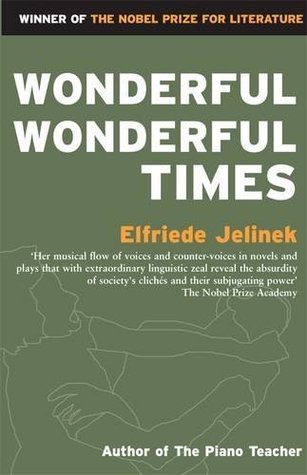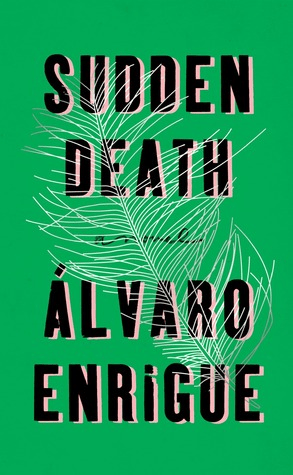Last year, when I wrote about the oddly soothing aspects of the murder mystery genre, I mentioned that I had another post about the show Father Brown that I wanted to write. Well, over a year later, I’ve finally gotten around to doing just that.
For those who aren’t aware, Father Brown is an amateur detective show loosely based on the short stories of G. K. Chesterton. The show follows the title priest (played by Mark Williams) as he solves various crimes—usually murder—around the fictional English town of Kembleford in the post-WWII period. Father Brown is joined by a group of supporting characters, including parish secretary Mrs McCarthy (Sorcha Cusack) and local noblewoman Lady Felicia (Nancy Carroll), and he often butts heads with an ever-changing line of police detectives, such as Inspector Sullivan (Tom Chambers), who rather begrudgingly tolerate the priest’s side hobby of sleuthing.
The episode I would like to look at in particular is “The Kembleford Boggart,” the seventh episode of the show’s third series. This is one of my favorite episodes of the show, not because of the mystery itself, but because of what the episode has to say about writing and about our reactions to it. I’m going to break this little investigation into three parts. In Part I, we’ll talk about the central figure of the episode and her concerns about how her writing will be received. In Part II, we’ll move onto the murder and how it instructs us on the way the artistic process actually works. Finally, in Part III, we’ll unravel the mystery and discuss the audience’s relationship with the author of a work.
Oh, before we begin—normally I find our age’s spoiler-phobia to be pretty obnoxious and a serious impediment to discussing art critically, but since this is a mystery we’re talking about, where half the fun is trying to piece the clues together yourself, consider this a spoiler warning: we’re going to reveal all the twists in this episode, because otherwise the themes are impossible to fully talk about. So, with that out of the way….
I: The Author
At the center of “The Kembleford Boggart”—aside from Father Brown, of course—is Hannah Moxley (Nathalie Buscombe), a 22-year-old woman who seems to be rather nervous about where her life stands. Some of her anxieties are professional. Hannah is a rising star of the British literary world; her debut novel, The Darkest Rose, was something of a sensation in the recent past, and she’s about to read an excerpt from her current manuscript at the home of Lady Felicia. For a writer that young, she could hardly ask for better. Still, she’s not certain that her new novel will find a publisher, even though Father Brown assures her that, from what he hears, “the literary establishment is waiting with bated breath.”
Of course, such anticipation can be its own form of pressure. Every writer who attains even the tiniest bit of artistic success fears that they’ll never be able to recreate that magic, that they’ve spent all their creativity on past works. But Hannah has an additional reason to worry about how her new novel will be received: it’s a significant departure from her previous work. We the audience aren’t told much about The Darkest Rose, but from other characters’ descriptions we glean that it’s an “uplifting” tale filled with “high jinks and espionage”. By contrast, her new book is an atmospheric horror story about a woman terrorized by a boggart. She’s completely shifted genres, and there’s no guarantee that her audience will follow her muse with her.
Judging by the response she gets at the reading, her concerns might not be unfounded. There’s a noticeable silence after Hannah finishes reading the excerpt from her work, before Lady Felicia hurriedly spurs the crowd into applause. Her story has certainly had an effect on Mrs McCarthy; she’s so shocked during the reading that she almost spills her sherry. But she’s more repulsed than enraptured by it, saying afterwards, “If that’s what passes for modern literature, I’ll stick with the Woman’s Weekly.” This is a small sample size, but it at least suggests that she’s right to be worried.
It was a minor miracle, however, that Hannah was able to give a reading at all, which brings us to her second source of worry: her father, Jeremiah (Simon Williams). Although Hannah is an adult already, Jeremiah Moxley exercises a great deal of control over his daughter’s life. He won’t allow her to manage her own finances, and he doesn’t allow her to read the fan mail that she’s received from around the world. Had Father Brown not offered to act as chaperone, Jeremiah would not have let Hannah read at Lady Felicia’s, lest she start socializing with the wrong sort of people. Even then, he expects that she will not leave Father Brown’s sight and that she’ll return home by eight o’clock sharp. Hannah, for her part, does her best to comply with her father’s various restrictions, but when alone with Father Brown she vents about how unreasonable her current situation is.
Indeed, a close look at the first scene after the cold open reveals how her different worries tie into each other. It would appear that her father’s overbearing nature has done a number on Hannah’s confidence as a storyteller. We first see Hannah describing the plot of her new book to Father Brown, who looks a bit puzzled by it. She assumes that he doesn’t like the story, but in fact he’s merely unsure of what a boggart is. Her face lights up at the chance to explain this bit of folklore, but alas Jeremiah enters the room and cuts her off with his own explanation. He then dismisses his daughter’s penchant for such stories right in front of her. “Forgive my daughter,” he says to Father Brown. “She has a fine talent, I’m assured, but her fantasies are a little far-fetched for my taste.” One expects that a writer’s parents would be her biggest cheerleaders; if they’re not on board with the project, why would anyone else be?
Hannah’s got quite a bit on her plate—and we haven’t even gotten to the murder yet.
II: The Mystery
Why don’t we hear a little bit of Hannah’s latest? Here’s the excerpt from her new book that so shocked the crowd at Lady Felicia’s:
Mrs Mallory lay stiff and bloated at Clarissa’s feet. Across her throat a tidy, fine slash, the stinging mark of a whip sharp tail. And all around the room, she saw the messy trail of an uninvited guest. A fresh fall of soot blanketed the hearth, and the floor was marked by jagged claws. As she rushed to the empty cot, she saw the boggart’s promise had been fulfilled. The housekeeper was dead and the baby was gone.
Hannah Moxley, unpublished manuscript, page numbers TBD
This being a murder mystery show, it’s only natural that this excerpt turns into the blueprint for an actual crime. The cinematic language makes it clear that Jeremiah will be the victim, as Hannah starts her reading over footage of her father opening her fan mail. After the reading, Father Brown loses track of Hannah, so he and Mrs McCarthy hustle over to the Moxley house in hopes of meeting her there. When they arrive, they find the door already open, and after some investigation they discover Jeremiah on the floor of an attic room, killed by his letter opener. It’s then that Mrs McCarthy notices that the room is full of soot and the floor is all scratched up, just like the room described in Hannah’s novel.
Father Brown jokes that the perpetrator was the boggart from the story, but no one actually buys into that notion. Mrs McCarthy immediately suspects Alfons (Philip McGinley), an Irish Traveller who got into a spat with Jeremiah that morning, while Inspector Sullivan considers the possibility that this was a burglary gone wrong. Father Brown, however, does think that the secret to the murder lies in Hannah’s story, as he spends all night reading over her manuscript. His initial thought, understandably, is the prospect that someone has re-enacted the scene from the novel, or more disturbing, that the novel is a preemptive confession from a beleaguered daughter. It’s not until later on that Father Brown realizes that he’s gotten the whole thing backwards.
See, we have often think of creativity in limited ways. We imagine inspiration as a sort of epiphany, a sudden blast of the divine. This view has a certain romantic aura to it, but it tends to render the process of creation completely inscrutable and unknowable; one either has the spark, or one doesn’t. More often than not, however, inspiration comes from the synthesis of small details that we experience. It’s not necessarily a veiled autobiography or a confession, but it does come from the world of the concrete, either senses or emotions. It’s only when Father Brown remembers that fact that the mystery starts clarifying itself.
After finishing Hannah’s new book, he takes Mrs McCarthy back to the Moxley house for what he calls “a lesson in perspective.” This is Father Brown’s big lecture for the episode, the step-by-step explanation of what’s been going on. But it’s not an explanation of how the murder happened; he’s not sure who did it at this point. No, it’s an explanation of why the room resembles the one in Hannah’s story:
[N]either of us had ever been in this attic room before. So how would we know that what we saw was unusual? Perhaps it wasn’t unusual. What if soot fell from that chimney every day? For instance, when somebody retrieved something from it…For example [reaches into the hearth and pulls something out], a key. And what if a badly hung door made marks on the floor every time it is opened, makes the scratches of deadly talons. Not life imitating art, Mrs McCarthy, art imitating life. It wasn’t until I finished Hannah’s manuscript that I realised the most significant image of all: the missing child.
Father Brown then unlocks the door, revealing a hidden nursery, where Hannah’s baby is asleep. The implication is clear: Hannah’s novel, the whole story about the boggart and the missing child, comes from her own experiences of having to hide her baby from the world, and the atmospheric details come from the steps she has to take to see him.
This little lecture from Father Brown not only advances the plot, but also further clarifies why Hannah seems especially nervous about her new novel. While on the surface it seems more fantastical than The Darkest Rose, it is in fact far more personal than her first novel. She’s transformed a source of shame into art, and now plans on sharing it with the world. But we’ve still got one mystery left: whodunit?
III: The Killer
As I mentioned in the first section, Hannah’s gotten quite a few fans off the back of The Darkest Rose, and it’s obvious that a number of them have formed parasocial relationships with her. In what might be Jeremiah’s one instance of genuine insight, he notes that the men writing fan letters to Hannah “have not got literature on their minds,” and that the volume and the passion of the fan mail increased after Hannah’s photograph was included in Modern Profile magazine. His daughter has become the object of affection—or obsession—for a great number of men, and that’s not necessarily the sort of attention that a young woman wants.
As it happens, we meet one of Hannah’s admirers at the reading at Lady Felicia’s, a journalist named Harry Grandage (Ben Deery). His work takes him all around the globe, where he seems to cover one tragedy after another. This is why, he tells Father Brown, Hannah’s work means so much to him:
I’ve only just got back from Brussels. I spent two months there before traveling down to Antwerp. I was covering the damage from the North Sea floods…My work always seems to bring me to people in times of grief. It takes its toll. So, when I read The Darkest Rose, I was so happy to lose myself to it. It’s a modern masterpiece.
Naturally, Harry is very excited to meet Hannah in person, but if you pay close attention to his tone and his facial expressions you’ll realize that he’s more than a little perplexed that Hannah’s not already familiar with him. Even worse, when Hannah signs his copy of The Darkest Rose, she makes it out to “Larry”. He laughs it off, saying that it’s “charming”, but he’s clearly a bit stung by their interaction.
It’s sometimes tempting to think that we can know a person through their art and that, by extension, we can form an actual relationship with them through it. We will excitedly praise a work for understanding us in a time of confusion or crisis, even if we know, intellectually, that the work emerged independently of our struggles and that the author wouldn’t know us from Adam. These parasocial bonds that we form with artists can be helpful in certain ways; for example, they can give us the knowledge that we are not alone in our difficulties. But where Harry appears to go wrong is in thinking that this grants him knowledge of the actual person behind the work.
One word that Harry uses a lot when describing Hannah’s writing is “escape”. After Jeremiah’s death, he explains to Father Brown why he’s staying in Kembleford to comfort Hannah: “When I first read her book, I was in the Republic of Korea covering the war, a taste of hell. Her work offered me the chance to escape then, and now I can do the same for her.” It’s clear that Harry needed some way to escape his troubles as a journalist, but note how he’s made the assumption that Hannah needs the same thing. It’s true that by strict definition Harry’s relationship with Hannah is no longer parasocial, but it’s by no means intimate, either. Harry sees himself as a companion, but by any objective measure, he’s just a passing acquaintance.
This being a murder mystery, Harry’s relationship with Hannah turns out to be a bit more complicated than that. Father Brown realizes that Harry’s one of the men who’s been writing fan mail to Hannah, not knowing that her father doesn’t allow her to read such letters. Instead, Jeremiah has been corresponding with Harry, posing as his daughter for the purposes of arranging a marriage. Hence Harry’s confusion at the reading: he’s been duped. Long story short: he confronts Jeremiah at the house and tries to leave to tell Hannah the truth; Jeremiah attacks him with the letter opener, and in the struggle, Harry accidentally stabs him with it. The whole killing was an accident, the result of a tragic misunderstanding.
But even after all that comes out, even after Harry realizes his whole relationship with Hannah was a sham, he still can’t let go of the image of her that he’s created in his head. Father Brown meets Harry in the woods, where he’s planning on leaving Kembleford with Hannah in tow. “She’s desperately in need of escape,” he tells Father Brown, still insisting that his needs are hers as well. Once Hannah arrives on the scene and the whole truth comes out, though, she takes Harry to task for his assumptions:
Harry: All I wanted was to take you away to escape with you. Isn’t that what you wanted?
Hannah: No! You’re no better than [my father] was. You want to control me. Well, I won’t let you. I’ve spent too long locked away. I want a free life. I owe that much to him.
To be clear: Harry is correct in thinking that Hannah would like to escape her current circumstances—we’ve established that much in the build-up to this—but that in no way implies that she wants to escape with him. That’s a major, nigh unresolvable problem with trying to read an artist through the works we enjoy: even if we’re completely accurate in our diagnoses, it’s pure narcissism to think we have anything to do with them.
For the record, Hannah’s actual love, Alfons, also got to know her through her writings: she would head down to the camp of Irish Travellers when they stopped by and read her stories to them. But the context there is completely different than it was for Harry, as Alfons got the chance to know Hannah as a person, not just as a name on a front cover and a photograph in a magazine profile. There were no assumptions to be made, just life to experience.
That was quite a bit from me, but what’s your take on all this? Are there any other films or TV shows that deal with literature in this way? Do have a favorite episode of Father Brown that you’d like to share? Sound off in the comments.
While your here, perhaps you’d like to read more about our relationship with art and our tendency to form parasocial relationships with artists. In that case, check on my post called “On Angst Music,” which might be my favorite blog post that I’ve written here.
And as always, thanks for your time.




















